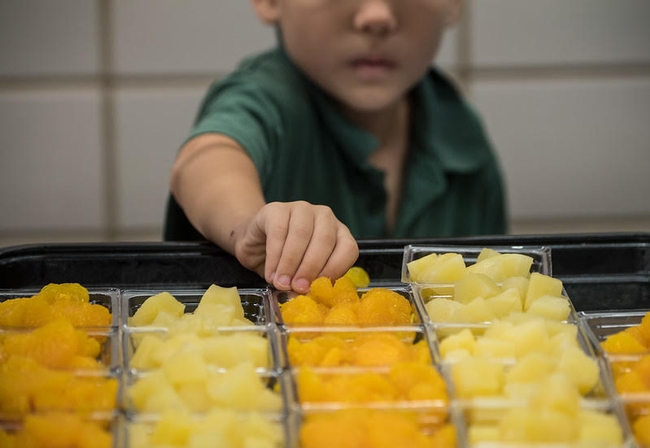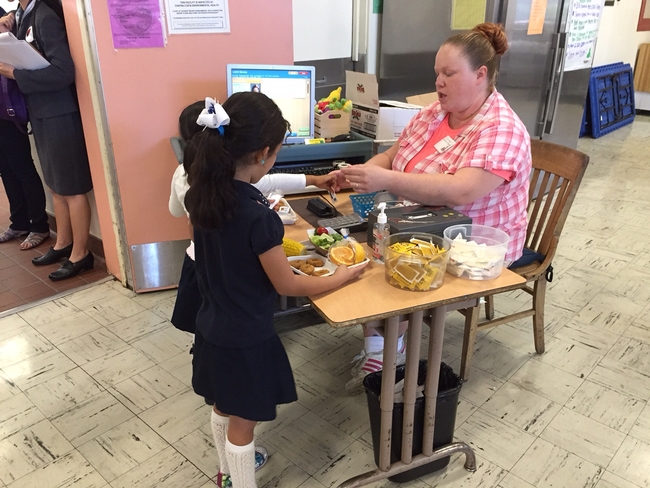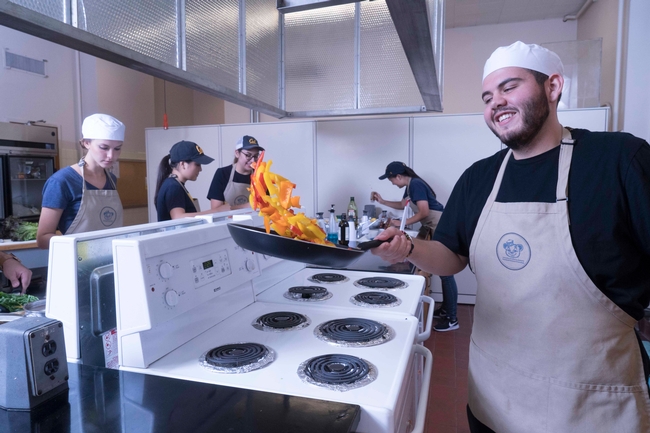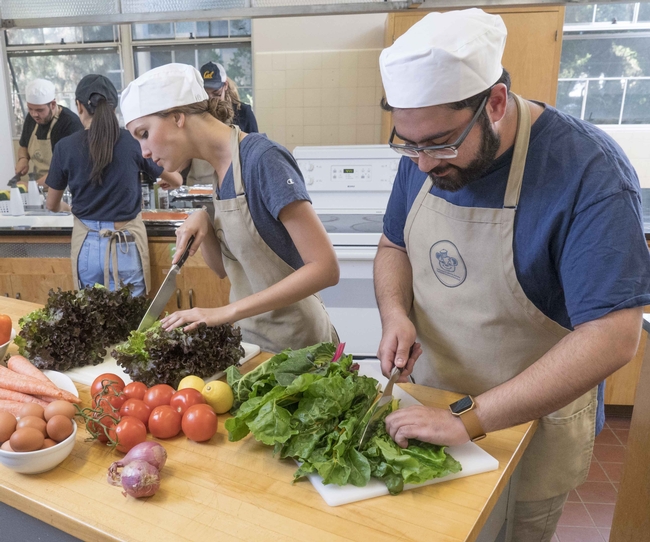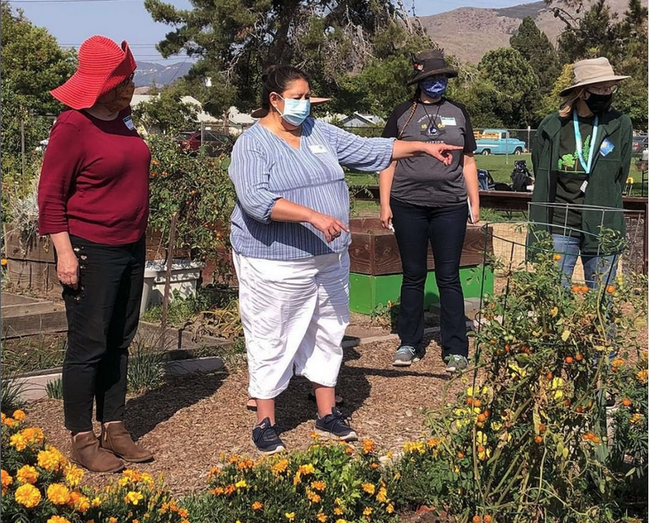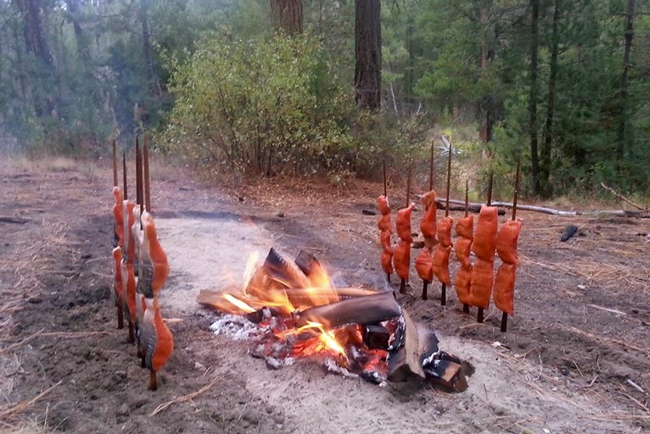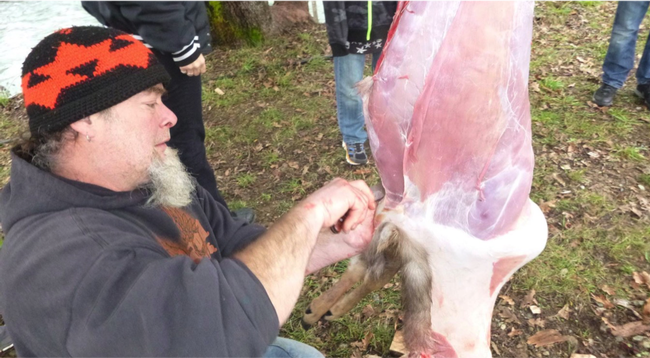Posts Tagged: Food security
Universal school meals increased student participation, lessened stigma
The COVID-19 pandemic exacerbated food and nutrition challenges. Many families initially lost access to meals offered by school and childcare facilities, experienced unemployment or work reductions, and faced increasing prices for food and other necessities. National and state policies and programs provided food and cash assistance to mitigate impacts on food security. Researchers at the Nutrition Policy Institute, a research center of University of California Agriculture and Natural Resources, evaluated safety-net policies implemented during the pandemic to better support families with low incomes in the U.S.
Benefits of universal school meals
The National School Lunch Program and the School Breakfast Program meet the nutritional needs of approximately 30 million K-12 students in America each day. Typically, students from families meeting income eligibility criteria receive school meals for free or a reduced price, while others pay full price.
NPI researchers Wendi Gosliner, project scientist, and Lorrene Ritchie, director and UC Cooperative Extension specialist, are co-leading studies of school meals in California in collaboration with researchers from the NOURISH Lab for Health Inclusion Research and Practice, who study school meals in Maine and other states.
During the COVID-19 pandemic, Congress funded school meals for all students at no charge, in order to address the dramatic increase in food insecurity among families with children after schools shut down in March 2020. This federal provision allowing for meals to be free for all students ended after the 2021-2022 school year, but some states elected to continue providing universal school meals with state funding, in recognition of the importance of these meals for student health and academic success.
California was the first state to adopt a statewide Universal Meals Program starting in the 2022-23 school year. To support the program's development, $650 million were invested to help schools improve kitchen infrastructure and provide staff training and technical assistance. Investments include Farm to School programs and other mechanisms to help update and improve school meals. Maine and several other states also have adopted universal school meals at least through the 2022-23 school year.
“States often act as incubators – things that work well in states sometimes get translated into federal policy,” Gosliner said. Identifying the success of the programs – and their challenges – can lead to improvements and help inform advocates and policymakers considering universal school meals policies at the state and national level.
Two of the team's research studies in California and Maine documented the benefits and challenges of universal school meals, as reported by school food authorities. Among 581 school food-service leaders in California who responded to the survey, nearly half (45.7%) reported reductions in student stigma as a result of providing free school meals to all students. Among 43 respondents in Maine, over half (51%) reported lessened stigma related to school meals being free for all. In both studies, nearly three-quarters of respondents reported increases in student meal participation. These and other data suggest that universal school meals are meeting their aim, to increase student participation while providing nutritionally balanced meals.
But when the child leaves campus, the responsibility to put a nutritious meal on the table falls on the caregiver.
“Universal school meals provide food and can ease families' budgets, but for too many families, wages as well as time and other resources are not adequate for access to and consumption of enough healthy foods and beverages,” Gosliner noted.
That is when other public programs are helpful, for example the Earned Income Tax Credit, or EITC.
Many eligible families do not claim Earned Income Tax Credit
The Earned Income Tax Credit is a national program designed to lift families out of poverty. The supplemental income can contribute up to nearly $7,000 per year for a family. Despite the EITC's known ability to improve participants' health, research shows that many EITC-eligible households in California and across the nation don't receive the benefits for which they are eligible, leaving $2 billion unclaimed in California in 2018 alone.
Gosliner led a study along with Lia Fernald from UC Berkeley and Rita Hamad from UC San Francisco to document levels of awareness, barriers to uptake, and benefits of participation in the EITC. Their recent publication reported that among 411 EITC-eligible California female caregivers, those who were younger, spoke languages other than English, and had less awareness of the EITC were less likely to receive the tax credit.
Developing a user-friendly system for providing safety-net support and, in the meantime, providing information and support to help more EITC-eligible families receive these benefits are suggested to help alleviate financial stressors. In the long term, these strategies may reduce poverty and improve the health of children.
Increasing WIC Cash Value Benefit a boon to health
In addition to universal school meals and EITC, families with low income may be eligible for the Special Supplemental Nutrition Assistance Program for Women, Infants and Children, or WIC. The program supports women and children up to 5 years old through nutrition education, nutritious foods and access to other health and social services.
One component of the WIC food packages, the Cash Value Benefit, provides participants a fixed dollar amount to supplement their family's diet with fruits and vegetables. During the pandemic, the U.S. Department of Agriculture increased this benefit from $9 to $35 per month, which was later revised to $24 per month per child in October 2021.
Ritchie contributed to a growing body of evidence on the importance and multidimensional benefits of the WIC Cash Value Benefit increase.
“Nine dollars buys only a quarter of what a child is recommended to eat every day,” Ritchie said. “The increase in Cash Value Benefit during the pandemic was an ideal natural experiment to investigate its impact.”
In collaboration with Shannon Whaley and her team at the Public Health Foundation Enterprises-WIC, NPI launched a longitudinal cohort study of nearly 2,000 California WIC participants. They found that the increased Cash Value Benefit improved WIC participant satisfaction with the program and allowed families to purchase greater quantities and varieties of fruits and vegetables.
“The increased Cash Value Benefit enabled WIC families to expose young children to new fruits and vegetables. Early exposure to a variety of fruits and vegetables is critical to establishing lifelong healthy habits,” said Ritchie.
The researchers found that the benefit increase also reduced food insecurity. It is hoped that the increase in program satisfaction translates into more eligible families enrolling and continuing to receive WIC. In November 2022, the U.S. Department of Agriculture proposed making the increased Cash Value Benefit a permanent part of WIC.
Knowing the proven benefits of the WIC program, Ritchie and colleagues from the National WIC Association, and Loan Kim at Pepperdine University, also engaged with WIC participants in other states.
In 2021, all state WIC agencies were invited to participate in a WIC satisfaction survey. Of the 12 WIC state agencies that opted to participate, Connecticut, Inter Tribal Council of Arizona, Nevada, New Hampshire and New Mexico added questions on the survey to understand how the increased Cash Value Benefit impacted children's dietary intake.
The study showed consumption of fruits and vegetables by children on WIC increased by one-third cup per day on average, which is sizable when considering the impact across the WIC population.
NPI research on universal school meals, the EITC and WIC constitute a small part of a more comprehensive approach to make healthy food more accessible, affordable, equitable and sustainable for all. The NPI provides resources such as policy briefs, peer-reviewed publications and technical assistance on several research areas such as safe drinking water, childcare and education. To learn more, please visit the Nutrition Policy Institute website.
Teaching Kitchen course helps improve college students’ food security
Cooperative Extension researcher: Nutrition course a boon for UC Berkeley students
College students across the nation are struggling to meet their basic food needs. Within the University of California system of 280,000 students, 38% of undergraduate students and 20% of graduate students report food insecurity.
As part of the UC Global Food Initiative, in 2015 the Nutrition Policy Institute (a UC Agriculture and Natural Resources statewide research center) identified student food insecurity as a UC systemwide problem, prompting the UC Regents and campuses to collectively address the issue.
All 10 UC campuses now have on-site basic needs centers, providing food, emergency housing and support services. The UC system and campus working groups recognize that meeting basic needs, such as food, is a multidimensional challenge.
In response to the 2022 White House Conference on Hunger, Nutrition, and Health, which called for national efforts to reduce diet-related disease and food insecurity, UC renewed their commitment to cut the proportion of students facing food insecurity in half by 2030. Campuses will partner with local counties to maximize enrollment in the Supplemental Nutrition Assistance Program (also known as CalFresh in California), provide food for students who do not qualify for CalFresh, and allocate campus food resources to historically underserved student populations.
NPI's collaborative researchers continue to monitor the impact of these efforts, in addition to other interventions, such as supporting students in building basic culinary skills, to improve food security. One multipronged approach to address food insecurity at UC Berkeley is a 14-week course on Personal Food Security and Wellness with a Teaching Kitchen laboratory component.
Sarah Minkow, who teaches the Personal Food Security and Wellness course at UC Berkeley, shared that students learn about nutrition and gain culinary skills through the Cal Teaching Kitchen.
The curriculum is designed with consideration for the time, cost and convenience of healthy eating. Discussions include food safety, calculating nutrient needs, mindful eating and reading nutrition labels. The Teaching Kitchen laboratory brings the lessons to life through knife skills, “no-cook” cooking, microwave cooking and sheet pan meals.
Minkow enthusiastically highlighted her students' “overwhelmingly positive [response to the] lecture and lab,” suggesting the benefits of an interactive learning environment to garner student engagement.
“Students often give feedback that they wish this was a required course for all UC Berkeley students,” said Minkow. She noted one barrier to reaching more students: capacity of the Teaching Kitchen space.
Susana Matias, a Cooperative Extension specialist at the UC Berkeley Department of Nutritional Sciences and Toxicology and collaborative researcher with the NPI, evaluated the impact of the Personal Food Security and Wellness course at UC Berkeley.
Matias reported that increasing food literacy and culinary skills among students has shown to increase intake of fruits and vegetables, and frequency of cooking, and reduce the number of skipped meals. Her study on the impact of the 14-week nutrition course also found a significant decrease in student food insecurity.
Across the UC System, students are benefiting from their campus Teaching Kitchens, including UC Berkeley, UC Davis, UCLA and UC Riverside. Other campuses such as UC San Diego, UC San Francisco, UC Santa Cruz and UC Santa Barbara offer basic student cooking classes as well.
Katherine Lanca, UC Global Food Initiative fellow working with NPI, attended the 2022 Teaching Kitchen Research Conference as part of her fellowship to learn about the latest research on teaching kitchens supporting equitable health outcomes.
The conference was hosted at UCLA by Harvard T.H. Chan School of Public Health Department of Nutrition in association with the Teaching Kitchen Collaborative. Teaching kitchens are a promising approach to supporting food security and cultivating lifelong habits, especially among a college student population.
For stress relief, food access, people turned to gardening during pandemic
More green spaces and urban farming opportunities could be helpful in future disasters
People who turned to gardening during the COVID-19 pandemic did so to relieve stress, connect with others and grow their own food in hopes of avoiding the virus, according to a survey conducted by researchers at the University of California, Davis, UC Agriculture and Natural Resources and international partners.
The survey report, “Gardening during COVID-19: experiences from gardeners around the world,” highlights the positive role gardening plays in mental and physical health, said Alessandro Ossola, an assistant professor of plant sciences.
“Connection to nature, relaxation and stress relief were by far the biggest reasons gardeners cited,” Ossola said.
The researchers sent links to online surveys via targeted emails to gardening groups, in newsletters and on social media between June and August 2020. They were hoping to gauge the significance of gardening as a way to cope with risk, how the pandemic changed gardening and what barriers existed.
More than 3,700 surveys were returned by gardeners from Australia, Germany and the United States.
Isolation, depression, anxiety reported
More than half of those responding said they felt isolated, anxious and depressed during the early days of the pandemic and 81% had concerns about food access. During this time, people also had more time to garden, and they saw the activity as a safe haven and a way to connect socially with others.
“Not only did gardeners describe a sense of control and security that came from food production, but they also expressed heightened experiences of joy, beauty and freedom in garden spaces,” said the report, which broke up responses by region or states.
In California, for instance, 33% of gardeners said their plots generated about 25% of their produce needs. Some gardeners with access to large spots to garden also grew food for their community.
Gardening offered a way to socialize safely during the pandemic
“People found new connections in the garden,” said Lucy Diekmann, a UC Cooperative Extension urban agriculture and food systems advisor who helped write the report. “It became a shared hobby as opposed to an individual one.”
Responses were fairly similar across all locations, even though the surveys hit in the summer and winter depending on location. “We see remarkable similarities in terms of what people are saying and the way they are interacting with their gardens,”Diekmann said.
More green opportunities needed
Many respondents also found it hard to find and buy seeds or plants and locate a spot to grow.
The report findings suggest an opportunity for government, community groups, businesses and others to promote community health by providing green spaces.
Gardening should be thought of as a public health need, one that could serve communities well in future pandemics or disasters. New Zealand, Canada and some countries in Europe write green prescriptions for people to garden to improve health.
“We need to change the narrative of how urban gardening is framed and elevate it to a key strategy for both environmental and public health,” Ossola said.
UC Davis graduate student Summer Cortez assisted with the research, as did Monika Egerer at the Technical University of Munich in Germany and experts from these Australian-based entities: Brenda Lin at Commonwealth Science and Industrial Research Organization, Jonathan Kingsley at Swinburne University of Technology and Pauline Marsh at University of Tasmania.
Torres Martinez Tribal Council helped distribute Farmers to Families produce boxes
During the month of June, families at the Torres Martinez Desert Cahuilla Indian Tribe and nearby trailer parks in eastern Coachella Valley received free produce boxes weekly from the USDA Farmers to Families Food Box Program.
This program was created by USDA to give families in need access to fresh food during the coronavirus pandemic. From May 15 to June 30, USDA purchased agricultural products under Families First Coronavirus Response Act from suppliers who were impacted by closure of restaurants and other food service businesses for distribution to those in need.
The UC Agriculture and Natural Resources CalFresh Healthy Living Program at UC Cooperative Extension in Riverside County helped connect the Torres Martinez Tribal Council with Sunrise Produce Company, a supplier in Southern California that contracted with USDA.
About 400 22-pound produce boxes were delivered to the tribal headquarters every Friday in June. Vice chairman Joseph Mirelez of the Torres Martinez Tribal Council and his team organized the truckload delivery and distribution. CalFresh Healthy Living, UC nutrition educator Jackie Barahona provided indirect education by distributing recipe cards from Leah's Pantry and handouts with the "eating the rainbow" recommendation from the Plate Full of Color storybook produced by CDC Native Diabetes Wellness Program.
According to the American Community Survey (2014-2018), 28% of families in Thermal live below poverty level (shaperivco.org). In addition, 16.7% (14,647) of children in Coachella Valley live in households where their parents/guardians were often or sometimes concerned about their ability to buy food. (harcdata.org, 2019)
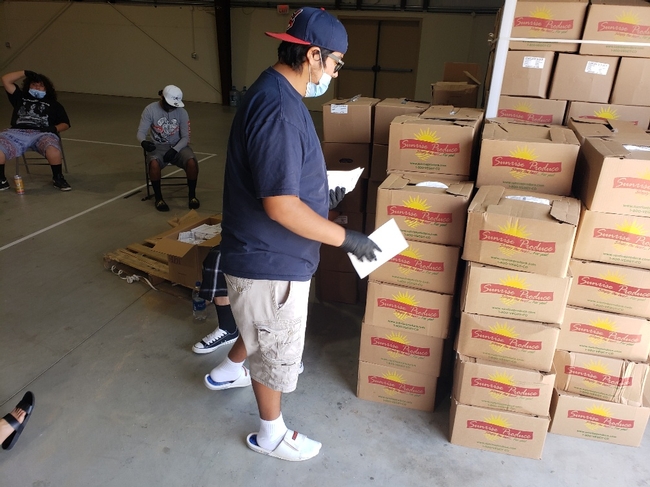
20200605 114905 resized
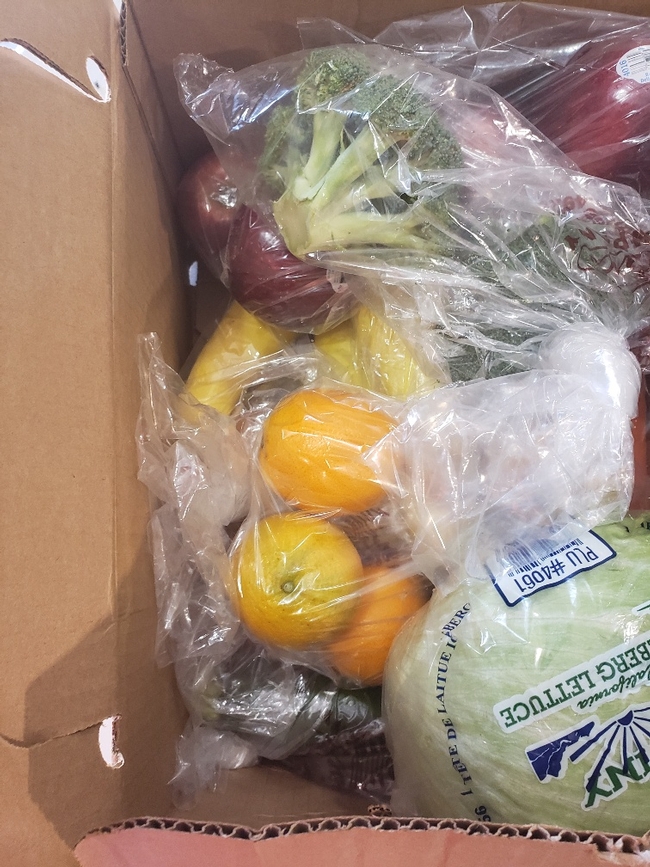
20200605 132838 resized
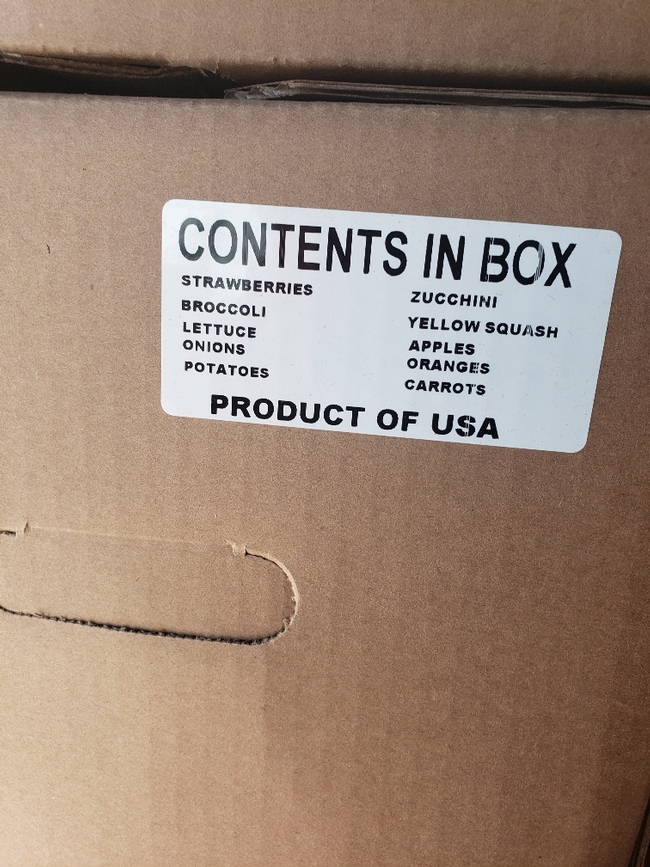
20200605 141621 resized
With access to native foods, Native American families less likely to face food insecurity
Native Americans suffer from the highest rates of food insecurity, poverty and diet-related disease in the United States. A new study finds that Native American communities could improve their food security with a greater ability to hunt, fish, gather and preserve their own food.
“How food security is framed, and by whom, shapes the interventions or solutions that are proposed,” said Jennifer Sowerwine, UC Cooperative Extension specialist at UC Berkeley, who led the study in partnership with the Karuk, Yurok, Hoopa, and Klamath Tribes. “Our research suggests that current measures of and solutions to food insecurity in the United States need to be more culturally relevant to effectively assess and address chronic food insecurity in Native American communities.”
The study conducted by researchers at UC Berkeley and four Native American tribes shows that 92% of Native American households in the Klamath Basin suffer from food insecurity.
Native American tribes in the Klamath Basin seasonally harvest, consume and store diverse aquatic and terrestrial native foods including salmon, acorns and deer. In survey responses, 86% of the participants said they consumed native foods at least once in the previous year. Yet significant barriers, including restrictive laws and wildlife habitat degradation, limit availability and quality of these foods.
While 64% of Native American households in the Klamath Basin rely on food assistance (compared to the national average of 12%), 84% of the Native Americans using food assistance worried about running out of food or had run out of food. This suggests the need to consider more effective solutions rooted in eco-cultural restoration and food sovereignty to address food insecurity in Native American communities.
Study participants strongly expressed the desire for strengthened tribal governance of Native lands and stewardship of cultural resources to increase access to native foods, as well as strengthening skills for self-reliance including support for home food production. Community members suggested solutions including tribe-led workshops on native foods gathering, preparation and preservation; removing legal barriers to hunt, fish and gather; restoring traditional rights to hunt, fish and gather on tribal ancestral lands; providing culturally relevant education and employment opportunities to tribal members; and increased funding for native foods programs.
While growing evidence suggests that native foods are the most nutritious and culturally appropriate foods for Native American people – and over 99% of people surveyed in the region said they want more of these foods – nearly 70% said they never or rarely get access to the native foods they want.
“We know our efforts to revitalize and care for our food system through traditional land management are critical to the physical and cultural survival of the humans who are part of it,” said Leaf Hillman, program manager for the Karuk Tribe's Píkyav Field Institute. “This study will support our ability to bring that message to the decisionmakers who need to hear it.”
With the study results indicating that increased access to native foods and support for cultural institutions such as traditional knowledge and food sharing are key to solving food insecurity in Native American communities, Sowerwine and the research team propose including access to native foods as a measure for evaluating food security for Native people.
The assessment is based on 711 surveys completed by households from the Karuk, Yurok, Hoopa and Klamath Tribes, 115 interviews with cultural practitioners and food system stakeholders, and 20 focus groups with tribal members or descendants.
In addition to Sowerwine and Hillman, the study was conducted by post-doctoral researchers Megan Mucioki and Dan Sarna-Wojcicki, and research partners from the Yurok, Karuk and Klamath Tribes.
“Partnering with tribal community members in the research makes the research stronger, and that is especially true in this unique food security assessment,” said Sowerwine. “With the study design grounded in nearly a decade of relationship-building and respectful engagement with our tribal partners, we are confident that our results reflect their priority questions and concerns while contributing valuable new information to the field of indigenous food systems.”
“Reframing food security by and for Native American communities: a case study among tribes in the Klamath River basin of Oregon and California” is published in the journal Food Security.
This research was part of a $4 million, five-year Tribal Food Security Project funded by USDA-National Institute of Food and Agriculture-Agriculture and Food Research Initiative Food Security Grant #2012-68004-20018. For full results and recommendations from the project team, visit https://nature.berkeley.edu/karuk-collaborative/?page_id=1088.


